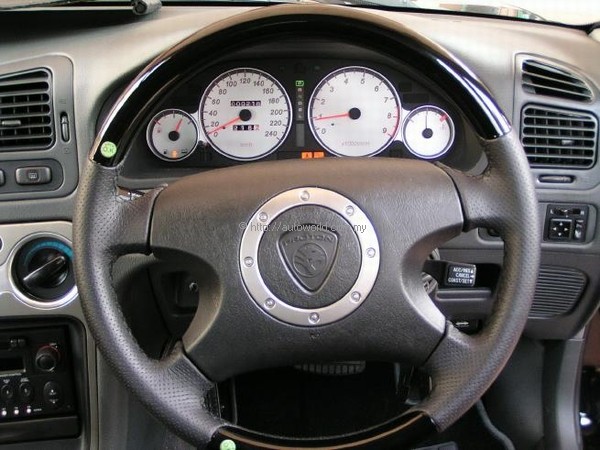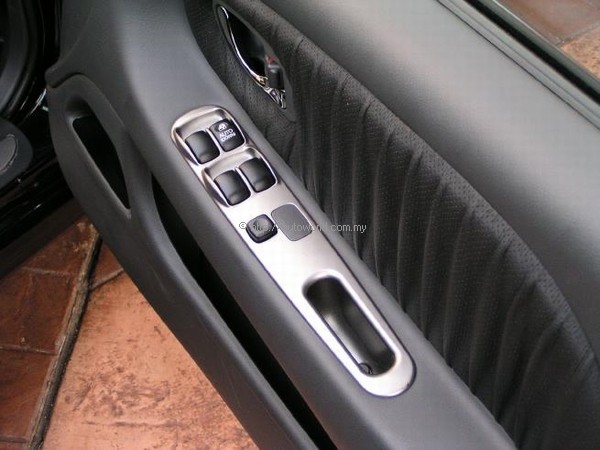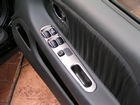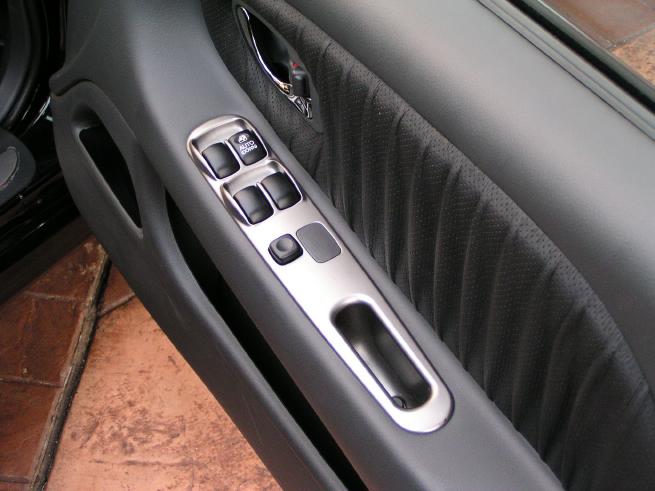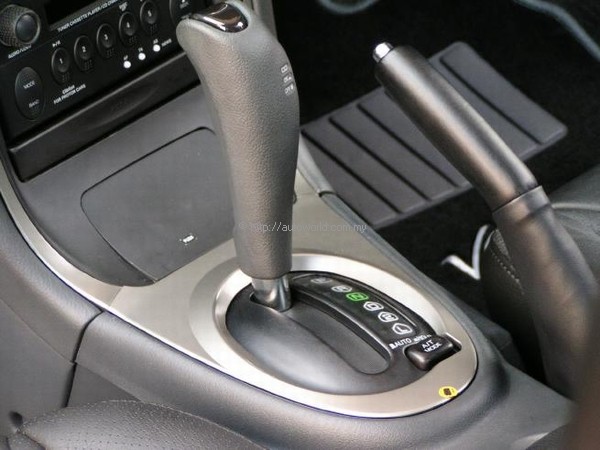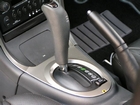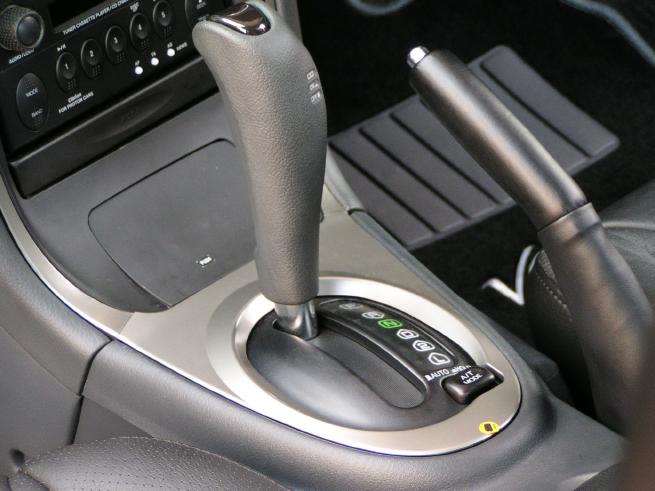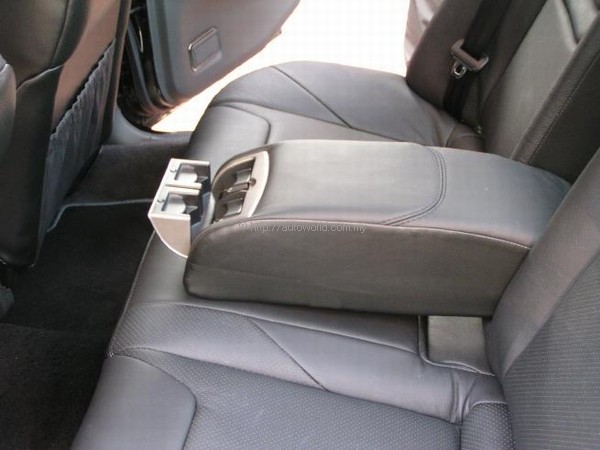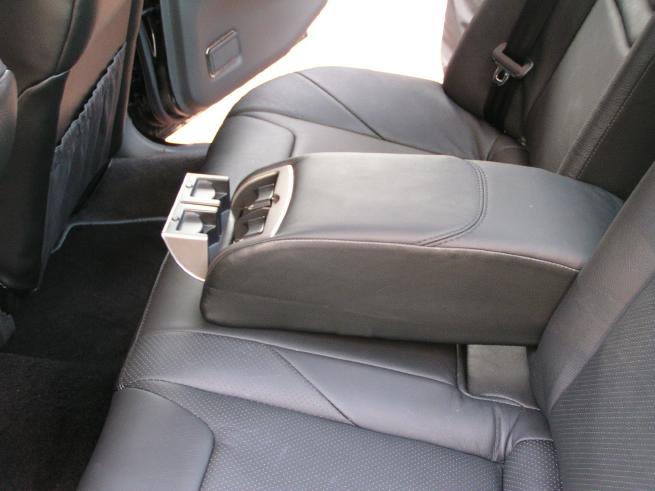A Better Proton Perdana V6 – for less money
Proton’s CEO, Tengku Tan Sri Mahaleel has said that the company has a host of new models in the pipeline which will take the company through the rest of the decade but in the meantime, it has to continue selling what it has. The strategy for the short-term appears to be not to expend too much money and time on making major re-engineering programs for current models, but to add value to them through cosmetic upgrades that refresh looks and minor tweaks. The money and effort is being channeled into development of new products for the future.
Evidence of this strategy can be seen in the new Proton Perdana V6 which is to be launched this weekend. The program is said to have cost ‘a few million ringgit’ and took just 18 months, with the focus on re-tuning the suspension to address some issues that feedback from owners gave, as well as enhance the value of the model.
More significantly, the new model comes to the market at a lower price than the one it supercedes: from around RM103,000 previously to RM98,961.94 in Peninsula Malaysia. Apart from the need to offer its models at prices which are ‘attractive’ in the current environment, the lower price is also a reflection of Proton sharing its cost savings with customers.
“We can lower the price a bit because of the greater localization of parts in this new model,” explained Datuk Maruan Mohd Said, Proton Edar’s CEO. The localization of parts is crucial for Proton in its quest to lower its production costs, especially for the Perdana, which has had quite a lot of imported parts due to its relatively small volumes. Even though Proton, being a national carmaker, enjoys preferential tariffs on its imported items, it still has to pay a lot when it buys stuff from Japan. For the new model, the amount of locally-sourced components is said to be up to 50% now but this excludes taking the V6 engine and transmission into consideration (both of which are supplied by Mitsubishi Motors).
 |
Considering the fairly short development period, it’s not surprising that the engineering was basically unchanged with the changes occurring in areas where new components can be slotted into existing openings, eg headlights and tail lights, and changes to the trim. The body panels (which are stamped here) are also carried over. The total number of changes in the new Perdana is 25, of which 12 are on the exterior and 11 inside, and 2 in the suspension.
The most obvious change is in the nose, with a grille described as ‘exuding the classic European designer look’. The Proton badge is set against a slatted triangular opening between the lights that is reminiscent of Alfa Romeos with the opening ‘cutting’ into the bumper quite deeply. It seems that Proton’s designers have really wanted to have this ‘cut-in’ and having been denied it when they discovered that public response to the idea for the Waja was not so positive, they have probably now decided to adopt it for the Perdana!
Personally, I still like the simpler look of the previous nose but the brief was to change the image and character of the Perdana from a luxury executive saloon to sporty executive saloon, so perhaps the bolder frontal presentation is understandable and even appropriate.
The new bumper is deeper, providing aerodynamic benefits in the form of less air rushing under the car to cause instability, and a protective mesh is fitted to the seven openings, just like racing cars. Those with body-coloured bumpers will know that it is distressing to see ugly marks on the bumper corners as a result of brushing against railings, walls or other cars. Many have stuck on protectors to try to avoid this problem but now, the Perdana owner won’t need to because hard protector pads are integrated at the corners.
The proportions are pleasant and the style still looks sleek. Though there are some bodywork changes, the drag coefficient is probably still in the region of 0.29 Cd (the original figure). New 16-inch wheels are fitted with a 5-spoke design that allows the disc brakes to be visible behind them.
At the rear, the tail light units are new with the functional sort of design that is the trend nowadays. Three cylinders inside house the various bulbs for running lights, brake lights and signal indicators. Between the lights is a trim cover with smoked grey reverse lamps built in. A touch of class comes from the chromed PERDANA lettering.
Like the front, the rear bumper has been reprofiled and besides corner protectors, reflectors are also integrated in the lower portion. Incidentally, a ‘bee-sting’ antenna is now standard for the audio system and fixed on the trailing edge of the roof.
The new Perdana comes with a choice of 4 colours – Midnight Blue, Silk (silver), Brown Mica and a Deep Red that is rather like those seen on Italian cars.
Now for the cabin changes, of which there are 11 specific ones although like any other manufacturer, there would have been ‘running changes’ made over time as well, usually in areas that are not visible. The dashboard is the same as before but there are more bright areas such as the new white-faced instruments which are rimmed by titanium-looking rings. The lower section of the centre console also has the titanium look as does a decorative ring on the steering wheel pad. The sporty-looking 4-spoke steering wheel is also leather-wrapped for a touch of classiness.
The titanium finish can also be found in the centre console box with a low-profile moulded design and for the surrounding trim of the base of the shifter. On the door armrests, the switch trim panels have a silver finish while brushed metal scuff plates (with PERDANA on them) are on each door sill.
Leather upholstery is standard and the leather has a nice feel to it – not too slippery and just supple enough. The door panels also have leather trim with a wrinkled texture that suggests ‘handcrafting’.
Airbags are not present, an omission which safety-conscious buyers will question – especially when this safety device is already being provided in cheaper 1.5-litre cars. The absence of airbags is mainly due to cost reasons as it would cost about RM2,000 per airbag to install but as mentioned earlier, Proton does not want to spend too much money re-engineering this model and to add airbags would have required a special engineering programme.
“It is not as simple as just adding an airbag system on,” explained Tengku Azizan of Proton’s R&D Department. “We have to redesign the dashboard to accept it and then run many tests to ensure that it operates properly because this is a crucial safety item.”
In the rear, the spacious accommodation has an air of luxury with the leather upholstery throughout. The centre armrest is new with well-designed cupholders appearing when the front edge is flipped open.
The changes made to the 4-wheel independent suspension have been done to enhance handling and provide more stability in transient maneoeuvres like quick lane changes. Lotus Engineering, the masters in this field, were commissioned to work on the tuning and their engineering solutions focused on offering better control of primary motions and smoothening secondary ride motion. The front suspension is a bit stiffer than the rear one but there’s said to be a good balance between the spring rates of the front and rear suspension. While precise details of changes are not available (nor would most people understand them), it is known that the bushes have not been changed.
So the question Perdana V6 owners would probably be asking is: can the new suspension be fitted to the old model? The engineers say it can but you would have to find out just what parts need to be changed. Quite likely, the secret to the improved handling is in the spring ratings and damper settings.
Incidentally, for those who may not be aware of the Perdana’s suspension, it’s a 4-wheel multi-link type, a rather sophisticated arrangement which is highly effective in keeping the wheels perpendicular to the road for maximum grip. Although multi-link suspension was once thought to be complicated and susceptible to having the links falling out of alignment, the problem is no longer evident.
The brake system consists of ventilated discs in front and solid discs at the rear. ABS is present, though it is not mentioned in the specs. Standard tyres are 205/55×16 size on 6.5JJ x 16 alloy wheels.
The V6 DOHC engine is said to be unchanged from before and for those who may be wondering, the ECU is a Mitsubishi one. So the prevailing output of 110 kW/150 bhp of power at 6750 rpm and 179 Nm of torque at 4000 rpm would still apply and the car would have the same claimed top speed of 205 km/h.
However, a source in Proton said that the 4-speed electronic automatic transmission with fuzzy logic is an improved one. They are aware that there have been cases of problems with the transmission and say that Mitsubishi Motors is now supplying an improved one for the new model. Basically, the fuzzy logic control system makes the transmission “smarter” by selecting the best shift pattern for a specific driving situation. It has been programmed with a higher number of variables that can be handled and the result is much smoother shifting and better response at all times.
BRIEF DRIVE
At the press preview today, Proton Edar organized a short test-drive in the Putrajaya area, mainly to allow journalists to check out the improved handling and ride comfort. The route was on smooth highway but had many sweeping curves and sharp turns which enabled assessment of the suspension improvements.
The immediate impression I had of the car was that the handling was surprisingly taut, with the steering responses being precisely transmitted to the front wheels. There was a sense of stability which I don’t recall feeling and which allowed the car to be pushed through corners with more confidence. I always felt the previous model had a slight wallow at the tail and in a very sudden lane-change move, it could become destabilized earlier than desirable. I didn’t get to try this maneuver out but I am almost certain that the new Perdana will respond positively in such a situation.
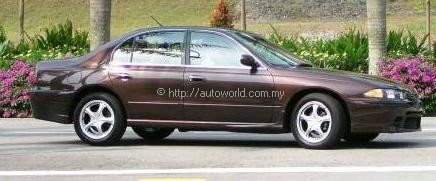 |
The V6 engine is still a nice unit, smooth and free-revving while the transmission also has a nice shock-free quality to it. There’s supposed to be a reduction in NVH but it was hard to ascertain this but I will say that the engine noise was well muted. Wind noise was also not apparent, a testimony to the good aerodynamics of the shape.
Overall assessment at this stage is that the new Perdana is still a worthwhile buy even though this model was introduced in 1994. Technically, it still has many good features and with the upgraded suspension on this model, it can still offer an exhilarating drive for the executive.
Those who have bought the previous Perdana at a higher price are likely to be upset that a newer and better model is now available for less, but this is a transitional phase which the company will just have to go through. It is vital for its prices to come down as the market environment changes, and there are no other ways of doing it.
“The current model prices will probably have to be revised but the new future models will not necessarily have such pricing,” said Datuk Maruan, agreeing that while Proton still needs a gap between its prices and those of competitors, such a scenario need not go on forever.






